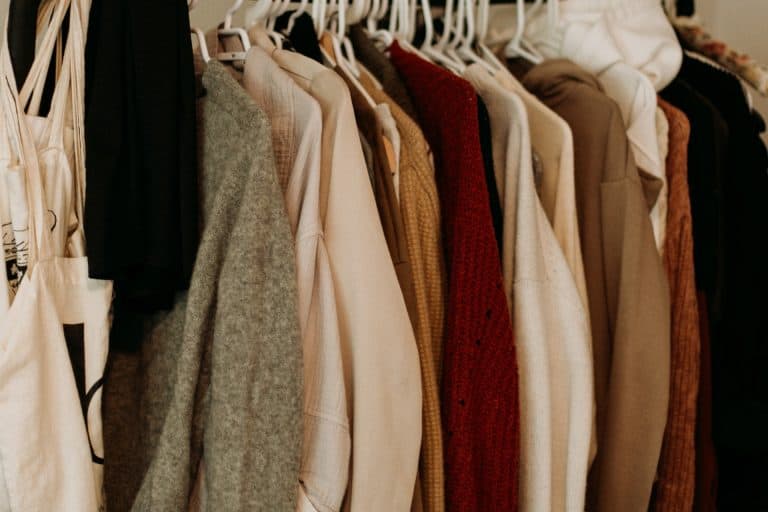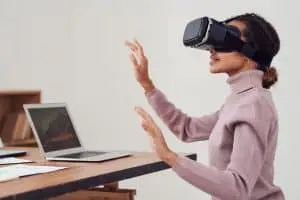Introduction
In recent years, the importance of tackling diversity and inclusion has been more prominent than ever. While companies traditionally tend to stray away from voicing thoughts on sensitive topics, diversity and inclusion do not have to be viewed as sensitive topics or matters of politics. Instead, efforts to include representation of diverse groups can be taken every day in simple ways in order to make customers feel more comfortable and represented in your store.
According to recent studies, “42% of ethnic minority shoppers would switch to a retailer committed to I&D”, and around “41% of LGBTQ would switch to a retailer committed to I&D”. However, instead of looking at these statistics as profit opportunities, it is important to look at these numbers from the standpoint of opportunities to build relationships with your community and consumers, and in the long term, brand loyalty.
With your retail store, you can be a part of the change to a more inclusive and welcoming society. In this article we’re going to discuss different ways to introduce everyday ways to celebrate diversity and inclusion in your brick-and-mortar stores through visual merchandising.
Here’s a sneak peek of the topics we’ll discuss in this article:
- Diverse Product Ranges and Displays
- Inclusive In-Store Advertisements
- Accessible Store Layouts
- Conclusions
1. Diverse Product Ranges and Display
Celebrating diversity and inclusion in your business has to start with the basics—including a diverse range of products in your merchandise. Investing extra resources into providing product options for minority groups can have a great impact for those who feel under-represented in the retail industry. This might seem like a simple feat but can mean so much to those who don’t often feel included.
- Incorporate Extended Sizes in Your Product Lines: Traditionally, many clothing products range from XS to XL. However, these sizes are not compatible with all body types. Brands such as Girlfriend Collective, an activewear company, includes sizes from XXS to 6X. Universal Standard, another clothing retailer, has an impressive selection of sizes ranging from 00 to 40. This range of sizes is hard to come by, especially in small business settings. By being more inclusive to different body types, customers will feel more welcome in your store, because all sizes should have the opportunity to have a fun and enjoyable shopping experience
- Offer A Range of Skin Tone Colors: Often, those who are not People of Color do not consider what “neutral” colors might be for minority groups. Especially when it comes to underwear, shape wear, or makeup, “neutral” tones are heavily weighted to the light side of the skin tone spectrum, leaving dark tones to be under-represented. Even product lines that claim to be inclusive of diverse skin tones often do not even come close to fitting every skin tone. If you can avoid contributing to this frustration that many POC have, do so. An example of a company who is making strides in diverse skin tone ranges is Skims. This shapewear/loungewear brand includes each product in true white and true black, as well as a wide range of neutrals in between.
- Display Merchandise on Inclusive Mannequins: Displaying inclusive mannequins is an action that is often considered long overdue for clothing retailers. The average dress size of a woman in America is currently 14-16, which is why it can seem baffling that sample size in the US is still considered to be 0-4. Speaking from personal experience, I understand the frustration that occurs when you try on merchandise, and it looks completely different on you than on the model. According to these size statistics, most American women know the exact feeling as well. Including mannequins that display merchandise on diverse body types and sizes will help customers 1) have a better idea how your clothing fits, and 2) not create a negative association with your company when they feel as though your clothes are not meant for them. An example of a company who has begun taking this step is Nike. Recently, this major retailer has started displaying plus-size mannequins in their stores. Smaller businesses have encouraged this body-inclusivity movement as well by including mannequins of all abilities in their shop displays.
These seemingly simple steps can create a world of difference to your customers. By taking these steps to represent different bodies in your product lines, you can help those in minority groups be sure that they have a place in your retailer.
2. Inclusive In-Store Advertisements
According to a recent study, advertisements that are “considered progressive are 25% more effective” than those advertisements that do not celebrate diversity and inclusion. The goal of inclusive advertising is “speak to a larger audience of potential buyers by looking past preconceived notions of gender, age, race, income, sexuality, language, and religion (among other things) in regards to the products being sold” (Impact). When a larger audience feels represented and heard in your store, more people will feel comfortable shopping at a brand that is making a conscious effort to unify its community.
Often, inclusive marketing campaigns are more effective when they depict stories. These stories do not have to be ground-breaking or revolutionary but could be as simple as people from different walks of life enjoying each other’s presence. To do this, consider the possibility of asking consumers from different backgrounds in your community to come together to discuss how this can be most effectively represented in your in-store displays. Your job as a retail owner is not to completely change your community, but more to create a space where all potential buyers feel comfortable and welcomed.
My personal favorite example of an inclusive marketing campaign is Aerie’s “Aerie Real” movement. The company has vowed to never photoshop or retouch photos of models in their advertisements and displays, primarily in the effort to combat toxic standards upheld by social media. If you walk into an Aerie location, you’ll find that no two models in their displays look the same. Aerie uses models to represent all body types, races and abilities. For Aerie, this movement has been so successful it has changed the retail industry—its competitor, Victoria’s Secret has taken many public hits from consumers who feel like VS contributes to the unrealistic standards that Aerie is working to change. As a result, Victoria’s Secret has closed over 250 stores in the past year and remains on the edge of bankruptcy (and will continue to if its business model remains stagnant).
Another retailer who is changing its industry with its advertising campaigns is Fenty Beauty. This cosmetic and skincare brand owned by Rihanna promised “Beauty for All” in its product line and did not disappoint. Not only does Fenty have one of (if not the) largest ranges of shades in the makeup industry, (named one of the best inventions of 2017 by Forbes), but it also created large in-store displays and commercials that operate with a “show, don’t tell” policy. The brand’s campaigns never once say they are trying to be inclusive, they just are by representing all races in their campaigns. Fenty Beauty is proof that this effect works—in its first year of launching, the company reported over $500 million in sales revenue.
3. Accessible Store Layouts
Another way to honour diversity specific to visual merchandising is to create store layouts that are inclusive and accessible to all. According to the CDC, 61 million American adults report having a disability. That means, roughly 1 in 4 customers that interact with your store are likely to have an impairment. Also, it is important to keep in mind that this statistic does not account for children or teens with disabilities. There are a few steps you can take as a retail owner to ensure that all members of your community with disabilities can have an easier time navigating your store layout and displays.
To accommodate those with mobility disabilities, regulations have been put in place that require many retail locations to have a ramp to the store entrance that fits a 1:12 slope ratio, meaning that 12 inches of length are required for every 1 inch of height. Adding ramps that fit these specifications to outside your store is a great star, but also consider strictly using ramps throughout your store in any elevation change, providing you are running a small business. In addition, adding handrails to all ramps and even around your store will provide a much greater accessibility to those who have difficulty navigating spaces.
Also, it is important to note the need for more accessible dressing rooms. Those with disabilities may need more spacious spaces to change to accommodate their disabilities and may prefer dressing rooms with doors opposed to just curtains to close of their space.
Another aspect of your visual merchandising that you might not initially consider is accessibility for those with visual impairments. When tagging your merchandise, opt for larger, clear font that can be easily read by a wide audience, including those of all ages and disabilities. It can also be of benefit for your store’s transaction machines to have an audio option. Small screens on card readers can be hard for people with visual disabilities to see and interact with.
While in this article we only touch on a few ways to make your business more accessible and inclusive to people with disabilities, you can ensure your business is following all regulations by using online resources that provide checklists for building an accessible store for all disabilities, such as the ADA’s website.
4. Conclusions
There is no denying the importance of celebrating diversity and inclusion in communities over the past years. This is a deep-rooted topic that does not have an overnight solution to being the most progressive and inclusive brand. However, there are daily steps to take to make the widest audience of potential buyers comfortable in your establishment.
The three best practices to make strides in diversity and inclusion that we discussed in this article all related to visual merchandising. This means tailoring in-store displays and merchandise arrangements to create a more welcoming and celebratory atmosphere. First, we discussed the need to include large product ranges for both extended sizes as well as range of skin-tone shades being represented in merchandise lines. Also, in this category, we talked about the importance of representing all body types with mannequins. Next, we explored the effectiveness of displaying advertisements and pictures in your store that include representations of all groups. Finally, we addressed how your store layout can be tailored to become more accessible to those who have disabilities.
The overarching theme in these efforts is to not go overboard trying to get consumers to perceive your business as progressive. Instead, Fenty Beauty has proven the effectiveness of showing, not telling in these aspects.







